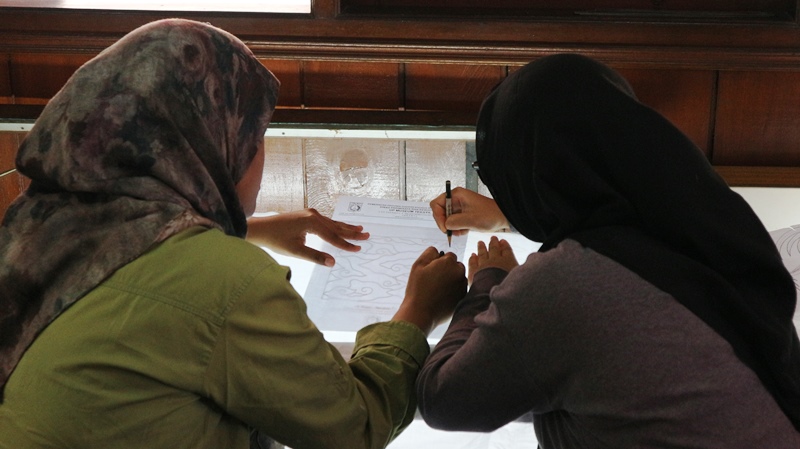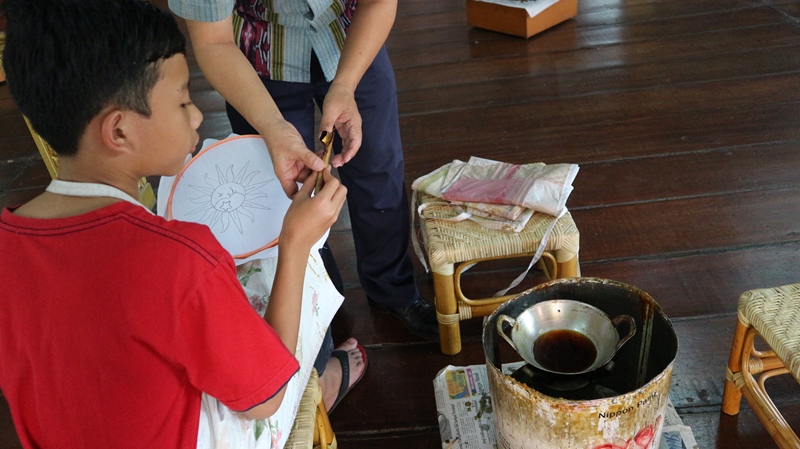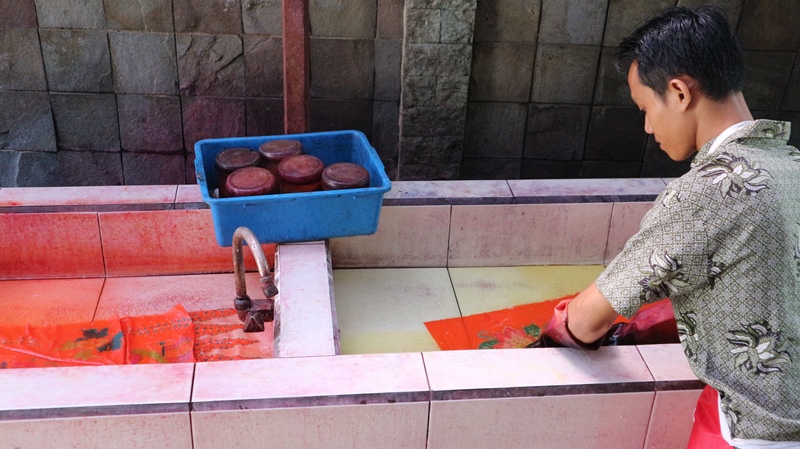An unique musical instrument from West Java, the angklung is made up of two to four bamboo tubes suspended vertically on a bamboo frame. The lower part of the tubes us unattached, enabling them to produce sound were shaken. Each piece of angklung is made using bamboo of a particular diameter, corresponding to the different chords its intended to produce. Therefore, the smaller the angklung, the higher note it produces.
To play the angklung, the left hand lightly holds the upper left edge of the frame while the right hand shakes the lower right edge of the instrument. The angklung can be played in an ensemble of 15 players with 15 pieces of angklung or in combination with other musical instruments. Watch wonderful angklung group play on Bandung bamboo musical instruments workshop below:
However, you could also play it solo. Couple weeks ago, we saw street musician who play angklung in a very comfy way – sit on the low chair, cross the leg, and effortless play this instrument:
The angklung’s present day diatonic chromatic scale, developed in 1938 by Daeng Sutigna of Kuningan, West Java, enables players to broaden their repertoire and go beyond traditional songs. The exotic sound of the angklung has attracted many contemporary Western musicians to incorporate the humble angklung into their ensembles.
Source : “The Ultimate Destination of INDONESIA”
Copyright : Indonesia Culture and Tourism Ministry (2011)
Disclaimer click here
Featured image credit: www.tempo.co
Do you want to experience angklung group orchestra just like people on the video? Read more about Bandung tour tips and trick here or drop us message here





